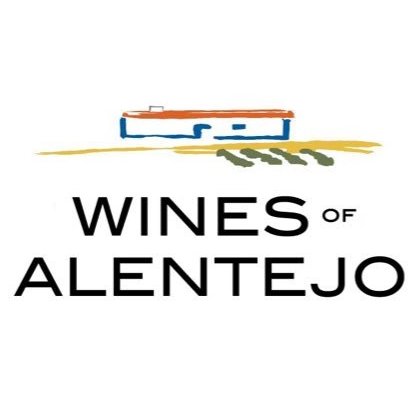
While many people think of Italy, France and Spain when they think of wine, they may be limited in their ideas about Portugal. Yes, Portugal is home to rich, luscious dessert-worthy Port, but the country also produces a wide range of still and sparkling wines. In fact, Portugal has a 2,000-year history of winemaking. Moreover, when Portugal joined the EU in the mid-80s, winemakers were given access to EU funds that permitted them to invest in, and ultimately improve, their vineyards and wineries. And, the wines are still relatively inexpensive, meaning that you can enjoy a great bottle of wine at a great price!
Within Portugal, there are 13 regions that cover the full geography of the country, inclusive of its islands. Among these is Alentejo, just 90-minutes east of Lisbon, which is where the majority of cork comes from. Like the rest of the country, has a lengthy tenure in the wine world with its viticultural roots dating back to the Romans. It was further influenced by the Tartessians, the Phoenicians, and the Greeks.
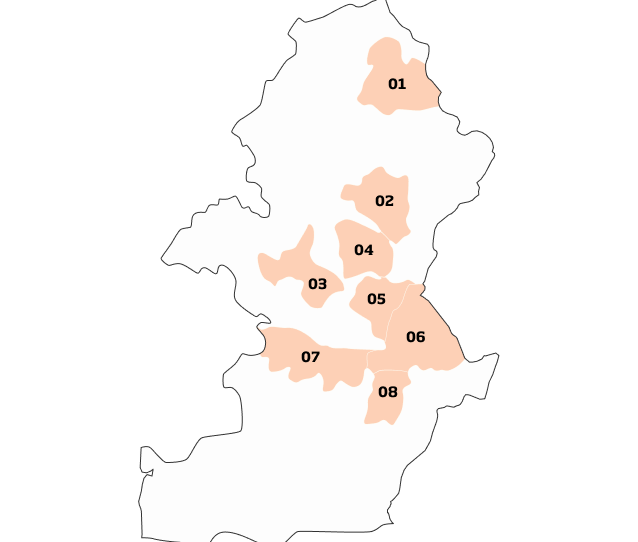
Unfortunately, Alentejo was forced to uproot many of its vineyard under the Salazar dictatorship (1933-74) and replace them with wheat. Yet, despite this setback, the region has held onto its traditional winemaking practices and, aside from Georgia, is the only region where the use of amphorae has been utilized without interruption for several thousand years. In its current renaissance, the region has continued to focus on these traditional winemaking techniques such as the use of concrete casks and lagares.
Today, this relatively flat region is home to a hot, Mediterranean climate and boasts over 250 native grape varieties; the most prevalent being Antao Vaz, Arinto and Roupeiro among the whites and Alfrocheiro, Alicante Bouschet, Aragonez, Castelao, Touriga Nacional and Trincadeira among the reds. The international varieties of Cabernet Sauvignon and Syrah are also widely planted.
Additionally, Alentejo has been a big proponent of sustainable agriculture, earning international recognition (including the Drinks Business‘ Green Award 2020) for WASP (Wines of Alentejo Sustainability Program), members of which account for ~50% of Alentejo’s vineyard area. More specifically, the WASP program incorporates both agricultural and vinification aspects, but also includes an emphasis on reducing costs, increasing economic viability, environmental issues and social concerns.
With its twin emphasis on honoring its history and implementing forward-thinking practices, Alentejo wines are definitely ones to watch!
TASTING NOTES

Casa Relvas Herdade São Miguel Rosé 2020, SRP $15
Founded in 1997, Casa Relvas is a family winery with two generations currently involved. This lovely Provencal-style rose is produced from the indigenous Touriga Nacional, along with smaller quantities of Syrah, Aragonez and others. Pale onion skin in color, it has a lovely yeasty note on the nose thanks to its sur lie aging. It is redolent of unripe berries and melon and is dry, fresh, and clean on the palate with long length.
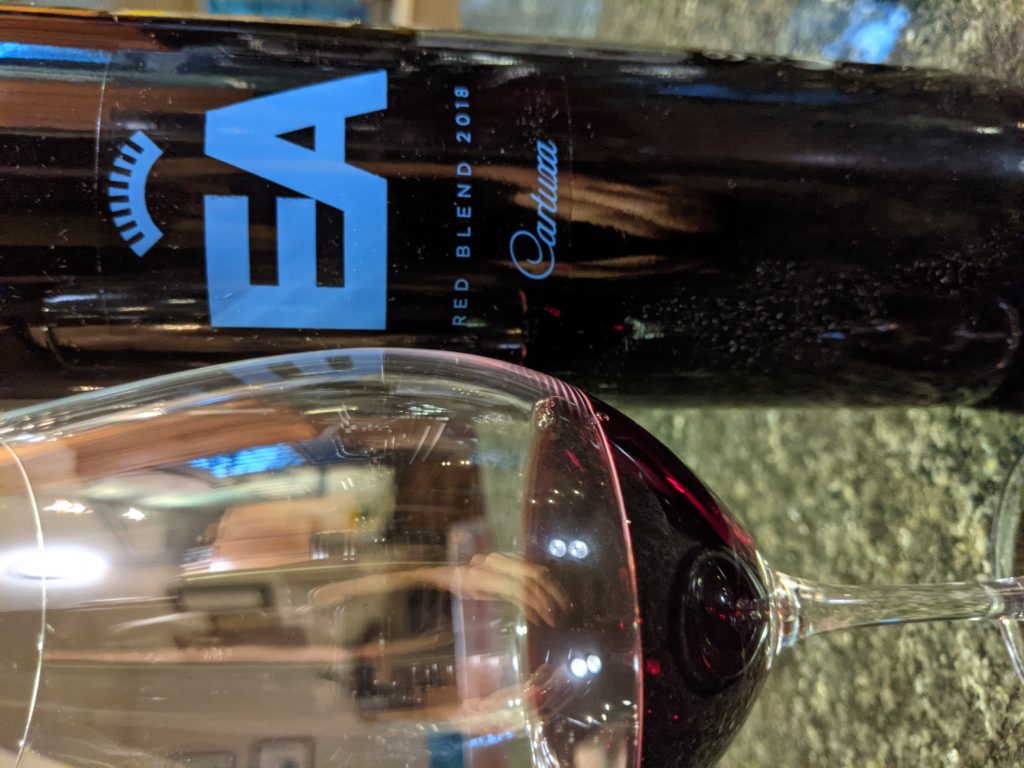
Cartuxa EA Red 2018, SRP $9
Initially founded in 1963, the Fundacao Eugenio de Almeida private foundation whose mission is to aid the development of the Evora region. Among its tasks, it is responsible for running the estate and winery, which has been in the Eugenio de Almeida family since the 19th century. This wine is a blend of 35% Aragonez, 30% Trincadeira, 20% Alicante Bouschet and 15% Syrah, and offers up jammy red fruit aromas, slight earth and menthol notes. On the palate, it is dry, very fruit forward with medium+ to full body, medium acidity, soft tannins, flavors of red fruit and earthy and good length.
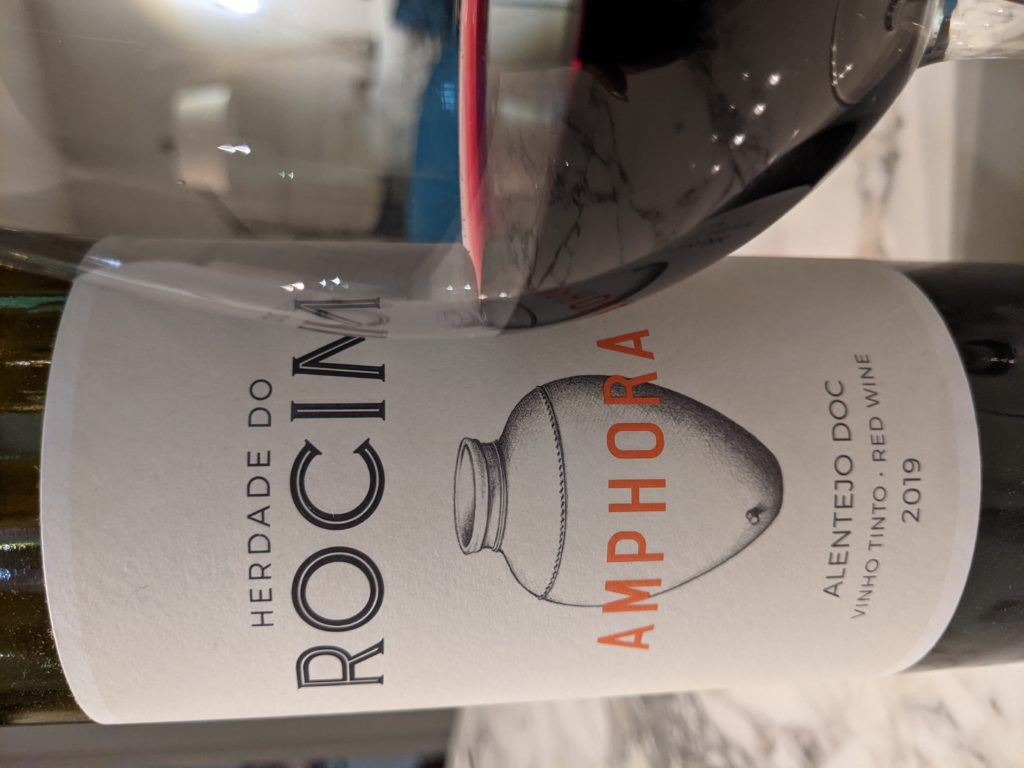
Herdade do Rocim Amphora Tinto 2019, Alentejo, Portugal, SRP $18 The culmination of a dream, Herdade do Rocim was established by Fernando Pessoa whose estate includes both vineyards and olive groves. Produced from a blend of indigenous varieties (including Moreto, Tinta Grossa, Trincadeira and Aragonez), utilizing a large, clay pot in which to ferment the grapes, this wine draws on a 2,000+ year old tradition of amphora wines. The result is a beautifully complex wine with aromas of berries, cranberry, plum and slight spice. The dry palate displays good acidity, medium body, medium tannins, with lots of fresh red fruit and spice, culminating in long length.
Adega de Borba Premium Red 2017, $15
Created in 1955, Adega de Borba was among the first wineries to be part of the national wine planning agency (Junta Nacional do Winho) at a time when wine was less important to the area’s economy. Yet, with time, the winery has sustained itself to its current position of 300 grape growers who cultivate nearly 2,000 hectares of grapes, 70% dedicated to red varieties and 30% to white. The winery is situated with Borba, a sub-region of Alentejo and is home to some of the oldest vines in the area. Bringing together Trincadeira, Touriga Nacional, Alicante Bouscht and Cabernet Sauvignon, this wine offers up lots of red fruit and spice, which persist on the full-bodied palate and are joined by notes of oak and darker fruit, with long length.
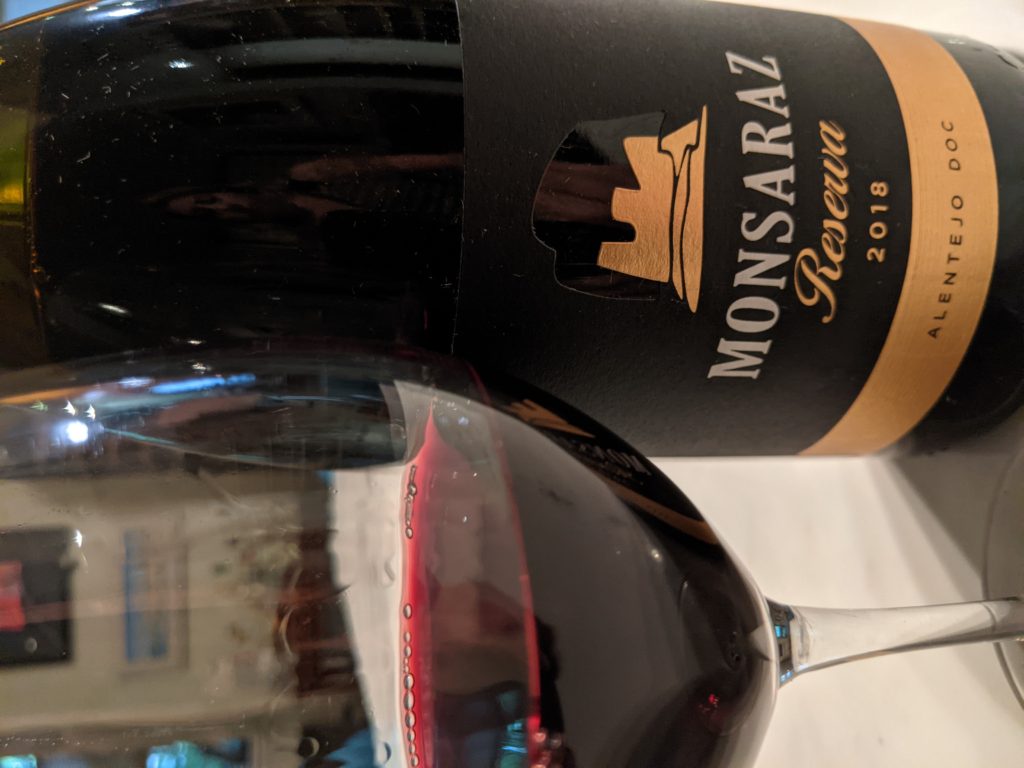
CARMIM Monsaraz Reserva Red 2018, SRP $16
The well-respected Cooperativa Agrícola de Reguengos de Monsaraz (aka CARMIM) was created in 1971 and currently counts 900 growers among its membership. With 24 different wines produced, it has quite a diverse portfolio. The wine has a pronounced nose of meat, smoke and red and black fruit that gives way to a dry palate with medium acidity, full body, robust black raspberry, oak, smoke and long length.
NB: All of the above wineries are members of WASP.
